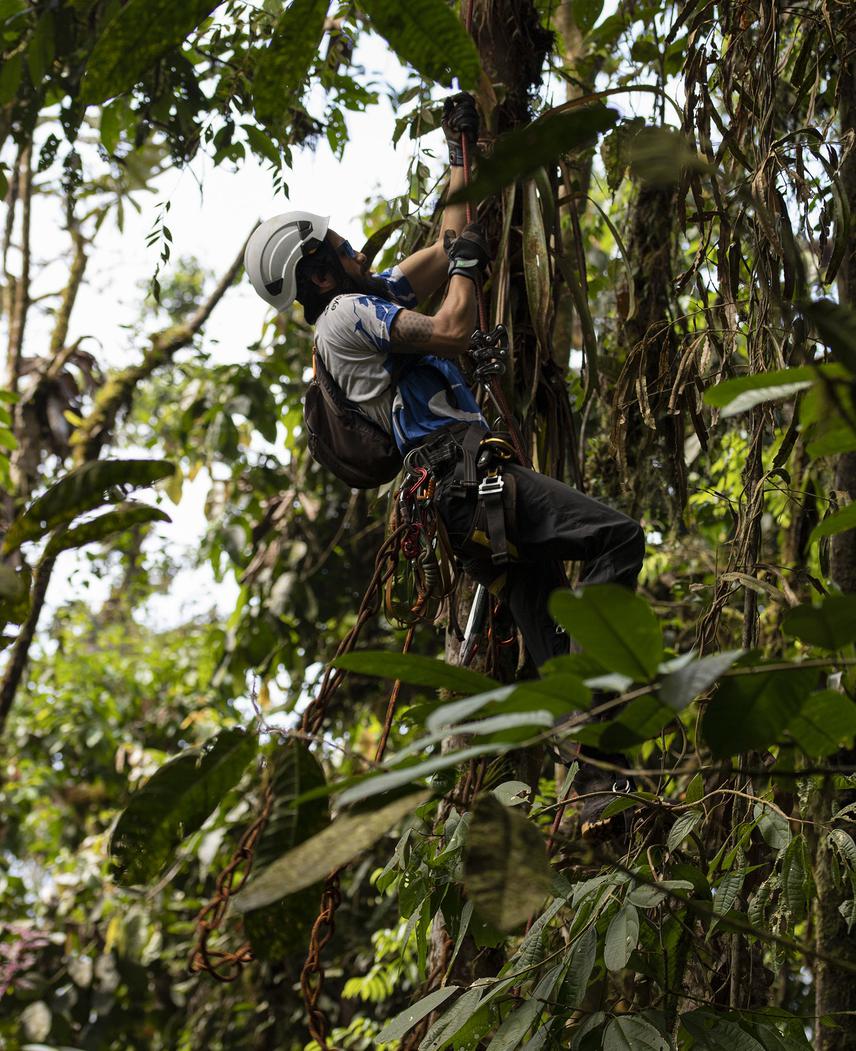Francisco Velásquez-Espín
The conservation of the Andean forests of Ecuador depends, to a large extent, on the documentation of species, evaluation of their conservation status, and endemism (Guayasamin et al., 2021). In this sense, one of the groups that can contribute the most are amphibians; despite the impressive number of anurans described during the last decade, there are places that, due to factors related to accessibility, are little explored, such as the canopy (Russell, Marshall, & Jarvis, 1990; Dial & Tobin, 1994). This stratum of the forest possesses unique qualities in terms of composition; for example, the abundance of microhabitats dominated by moss and bromeliads (McCracken & Forstner, 2014). Many organisms, especially amphibians and macroinvertebrates, use bromeliads during various stages in their development, making them a fundamental part of the lives of several species (McCracken & Forstner, 2014; Guayasamin & Funk, 2009).

In order to study this forest stratum, it is necessary to implement specific arborist techniques, which allow climbing and moving to access the bromeliads (McCracken & Forstner, 2008). Once there, one can not only record and sample canopy invertebrate fauna and herpetofauna but also obtain data about climatic conditions, presence or absence of pathogens of interest such as the fungus Batrachochytrium dendrobatidae (B.d.), responsible for the worldwide population decline of more than 500 amphibian species (Scheele et al. 2019).
The study proposed here, is also likely to result in surprises, such as the discovery of new species for science. This information could be directly used in the conservation of Andean cloud forests, especially in the face of the threat of mining concessions.
Our objective is, by exploring the canopy and knowing its amphibian inhabitants, to make a specialized integrative conservation plan that contributes to the overall conservation of the site using the high-altitude amphibians.
Due to the extreme difficulty of carrying out biological sampling in the canopy, the work proposed here has enormous scientific originality. By conducting evaluations of this forest stratum, we expect to potentially find new species for Ecuador (taxonomy and systematics), obtain data related to the behaviour and ecology of high-altitude amphibians and their diseases (ecology), and increase the records for the region (biogeography).
Finally, as demonstrated in the case of Los Cedros Protected Forest (Guayasamin et al., 2021), the records of endemic and threatened species represent one of the best legal arguments for the protection of Andean forests, under the umbrella of the Rights of Nature.